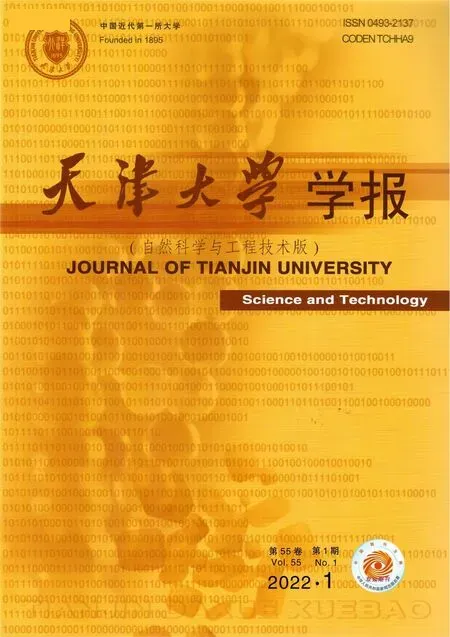长寿命高可靠性焊接结构
徐连勇
长寿命高可靠性焊接结构
徐连勇1, 2, 3
(1. 天津大学材料科学与工程学院,天津 300350;2. 天津市现代连接技术重点实验室,天津 300350;3. 天津大学内燃机燃烧学国家重点实验室,天津 300350)
现代装备结构的设计与成形制造面临着极端复杂环境和长寿命安全服役的双重挑战,焊接接头因其自身特性一直是焊接结构可靠性的最薄弱环节.本文以火电蒸汽管道和深海油气管道等能源装备中的主管道为对象,针对主管道在极端复杂环境下服役安全所面临的共性问题,以管道失效的材料微观损伤机制为基础,提出了协同提升应对复杂环境的焊接接头综合性能的组织调控原理,创建了含缺陷管道服役寿命的精准预测理论,并形成标准,从而构建了材料-接头-结构一体化的长寿命高可靠性焊接结构设计、成形与评价理论及技术体系.
长寿命;可靠性;焊接结构;成形制造;协同提升
焊接结构是采用焊接工艺实现各零部件之间连接的结构,在船舶、桥梁、车辆、压力容器、油气管道、飞行器、工程机械等领域中大量应用.随着现代工业科技发展,焊接结构正在向大型化、高参数、长寿命发展,如大飞机、航天空间站、深海油气装备、高效清洁火电、核电、石化压力容器、高铁等,面临高温、疲劳、腐蚀、严寒、辐照等复杂恶劣的服役环境条件,长寿命高可靠性成为现代装备对焊接结构的必然要求.焊接接头因特有的材料、组织、性能不均匀性使其成为焊接结构可靠性的薄弱环节,且接头中不可避免的焊接残余应力和焊接缺陷也加剧了薄弱性.因此,通过焊接结构的设计、成形制造,获得满足其设计寿命的服役性能,并在结构服役期间实现准确的剩余寿命预测,成为现代工业发展的迫切需求,也一直是学术界和工业界共同面临的命题.
高温蒸汽管道和深海油气管道是高效洁净超超临界机组和深海油气田的生命线,面临着超高温、超高压、超强腐蚀、超大变形的威胁,在此极端复杂环境下焊接接头因蠕变疲劳失效和腐蚀疲劳失效导致的管道裂爆是制约管道长寿命服役安全的瓶颈.本文以这两类主管道为例,针对其面临的服役安全共性问题,以提高接头性能、精准预测寿命为目标,从建立材料损伤微观机制,提出接头综合性能协同提升的组织调控原理,创建管道服役寿命精准预测模型3个维度,构建了材料-接头-结构一体化的长寿命高可靠性焊接结构设计、成形与评价理论及技术体系,广泛应用于我国火电机组和深海油气田项目.
1 极端复杂环境下材料的服役损伤微观机制
1.1 基于析出物微观演变的耐热钢高温蠕变、疲劳及交互作用下的损伤机制
超超临界火电机组主蒸汽管道主材通常采用P92、G115钢等9Cr铁素体耐热钢[1-3],蒸汽管道承受严苛的高温蠕变、疲劳及交互作用,其焊接接头细晶区的Ⅳ型蠕变裂纹(图1)是制约管道寿命的主要因素[4-7].众所周知,析出物的形核与长大对铁素体耐热钢的蠕变性能具有重要影响,如Laves相会严重劣化蠕变性能.在研究铁素体耐热钢蠕变损伤机制中,发现正火处理后原奥氏体晶界处残留有未溶解的M23C6碳化物,而蠕变过程中析出的Laves相总伴邻M23C6存在(图2),进而揭示了原奥氏体晶界处残留M23C6辅助Laves相形核并协同长大(图3)是铁素体耐热钢蠕变损伤的主导微观机制[8].继而发现原奥氏体晶界处残留M23C6对铁素体耐热钢焊接接头细晶区Ⅳ型裂纹形核长大起到主导作用.如图4所示,在焊接过程中,细晶区承受短暂热循环作用,M23C6溶解并短程扩散,在原奥氏体晶界附近形成部分高碳细晶粒,在随后服役蠕变过程中高碳细晶粒在原奥氏体晶界处沉淀析出碳化物,继而形核蠕变空穴,并聚合、连接,导致晶界分离,最终发展为裂纹[9-10].
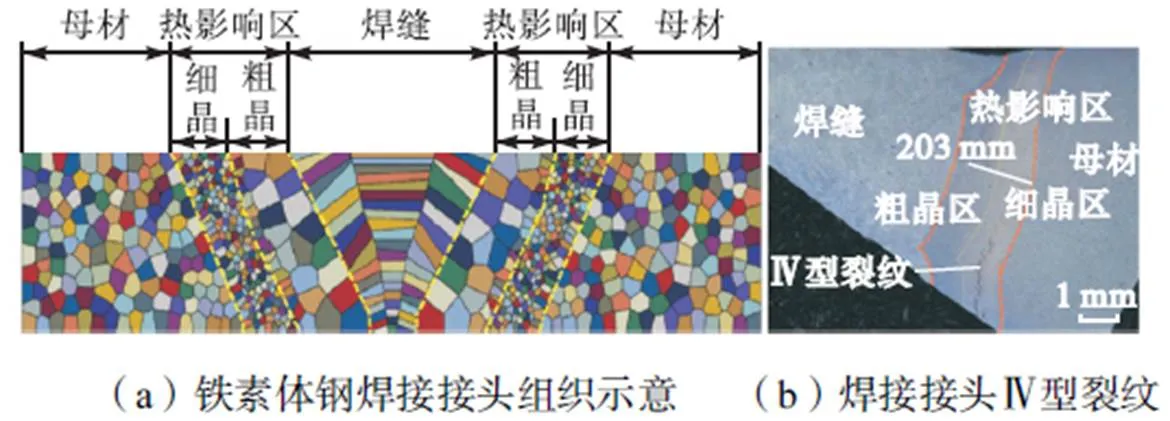
图1 铁素体耐热钢焊接接头组织与Ⅳ型裂纹
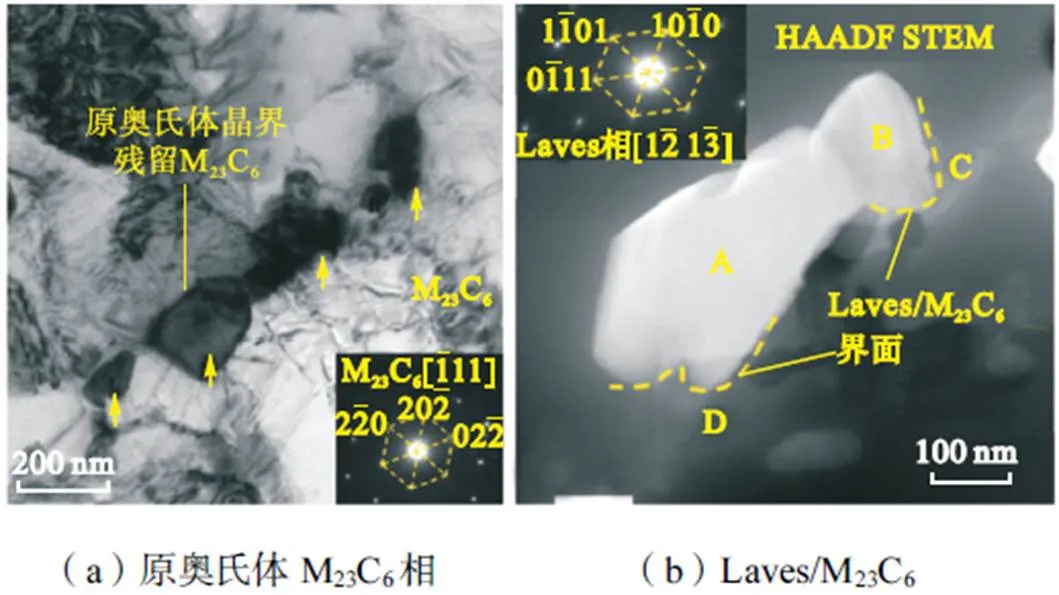
图2 Laves相与M23C6相伴存在
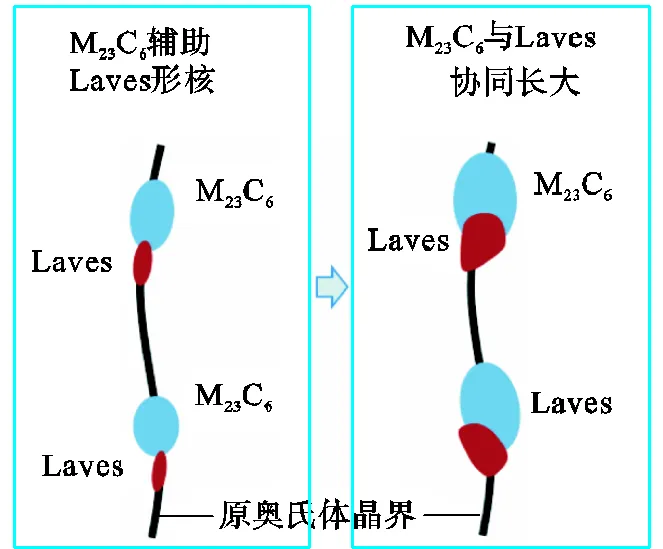
图3 M23C6辅助Laves相形核与协同长大机制
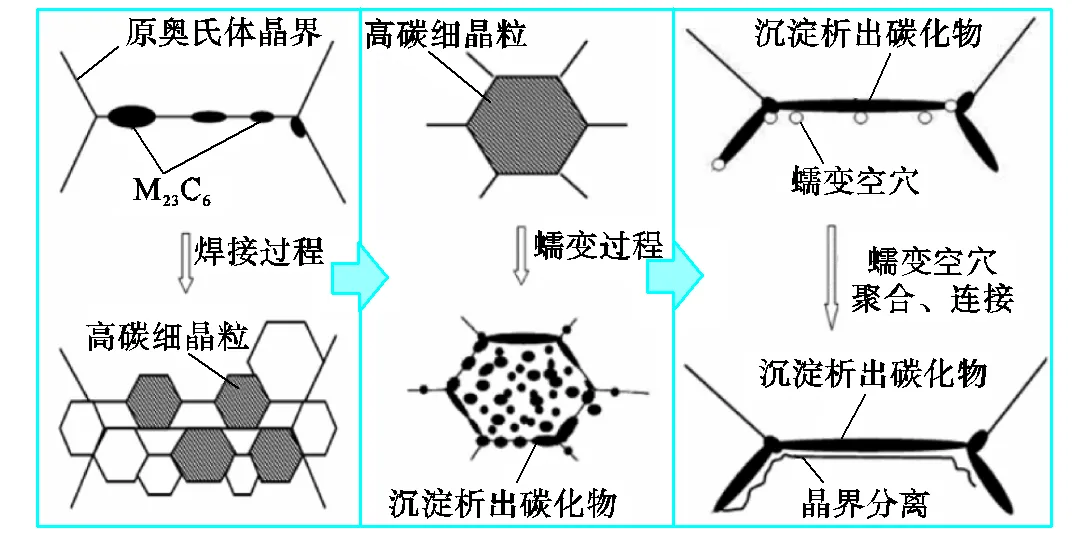
图4 Ⅳ型蠕变裂纹形成机制
另一方面,研究发现细晶区高拘束应力状态(图5)和高焊接残余拉应力促进蠕变空洞萌生[11-12],而三叉晶界处的蠕变空洞与晶界变形交互作用(图6)促进微裂纹萌生[13-14],从而建立了细晶区加速损伤的宏微观力学机制.

图5 焊接接头细晶区高拘束应力状态
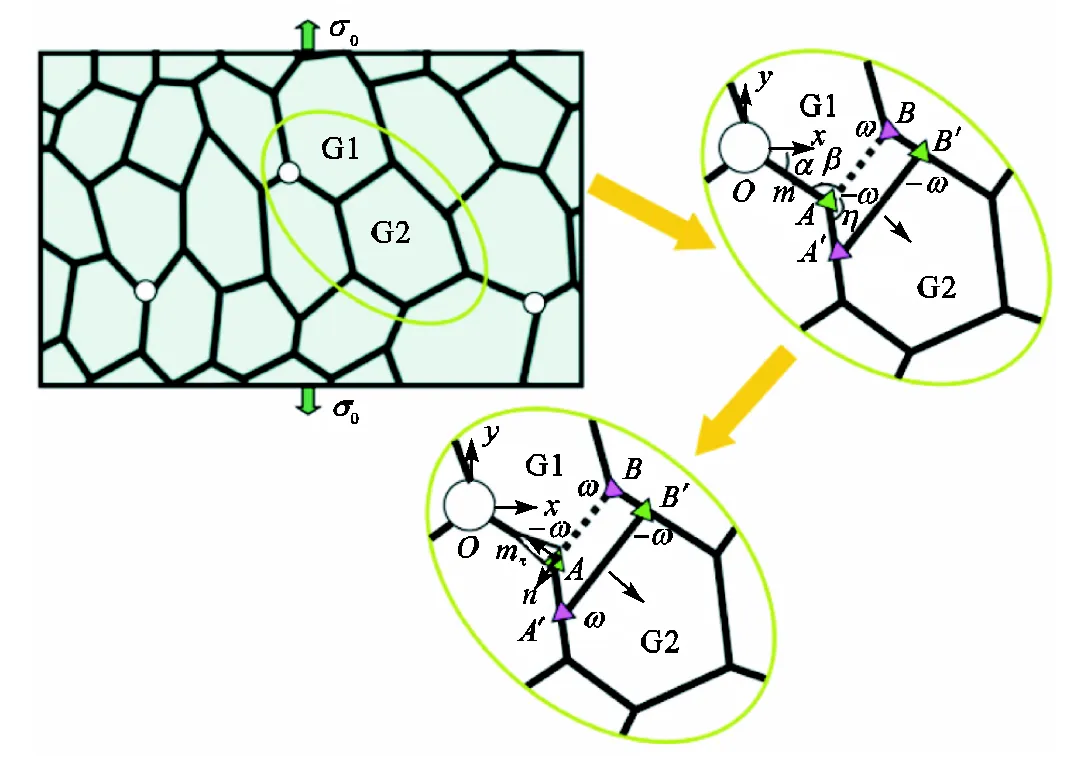
图6 三晶粒交汇处微空穴与晶界变形交互作用
1.2 管线钢焊接接头大应变与抗应力腐蚀综合性能协同提升机制
深海油气管道在海上铺设阶段会经受1%~3%反复塑性应变(S-lay达1%,J-lay达2.5%,Reel-lay达3%),在海底服役阶段由于海底沙脊沙坡运动和海洋内波会经受高达2.5%的反复高塑性应变,并且管道输送的油气中还存在H2S酸性强腐蚀介质,使得深海油气管道面临高应变疲劳和H2S强腐蚀的双重挑战.塑性应变带来焊接粗晶区低温脆化,断裂韧性差,在高应变疲劳下脆断风险大,同时增加氢脆敏感性(图7),又带来严重的抗H2S腐蚀性能下降的问题.因此,传统方法仅调控晶粒尺寸无法实现综合性能提升,而高应变又会同时降低这两种性能,更加剧了调控难度.
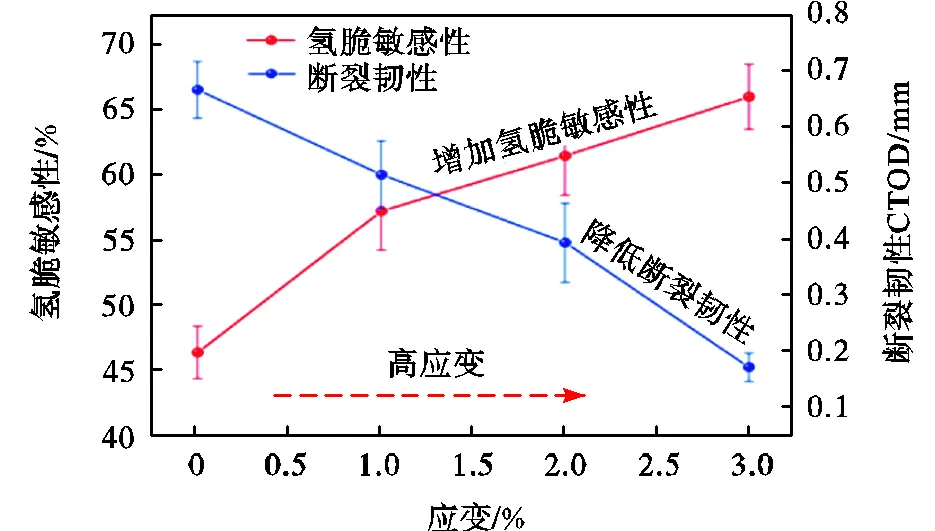
图7 高应变带来的脆化与氢脆敏感性问题
从微观组织层面上,可以阐明循环高塑性应变引起低合金高强管线钢焊接热影响区晶粒形态改变、氢陷阱数量增加、大角度晶界减少,降低断裂韧性且增加氢脆敏感性,增加断裂机制由延性向脆性转变的风险,通过揭示焊接热循环与贝氏体形态、链状M/A组元含量、板条贝氏体和粒状贝氏体比例的关联,发现板条贝氏体和粒状贝氏体等比例时既能保证最低氢脆敏感性,又可提高断裂韧性,从而建立了断裂韧性与抗H2S腐蚀性能协同提升的焊接热循环调控原理[15-17](图8、图9).
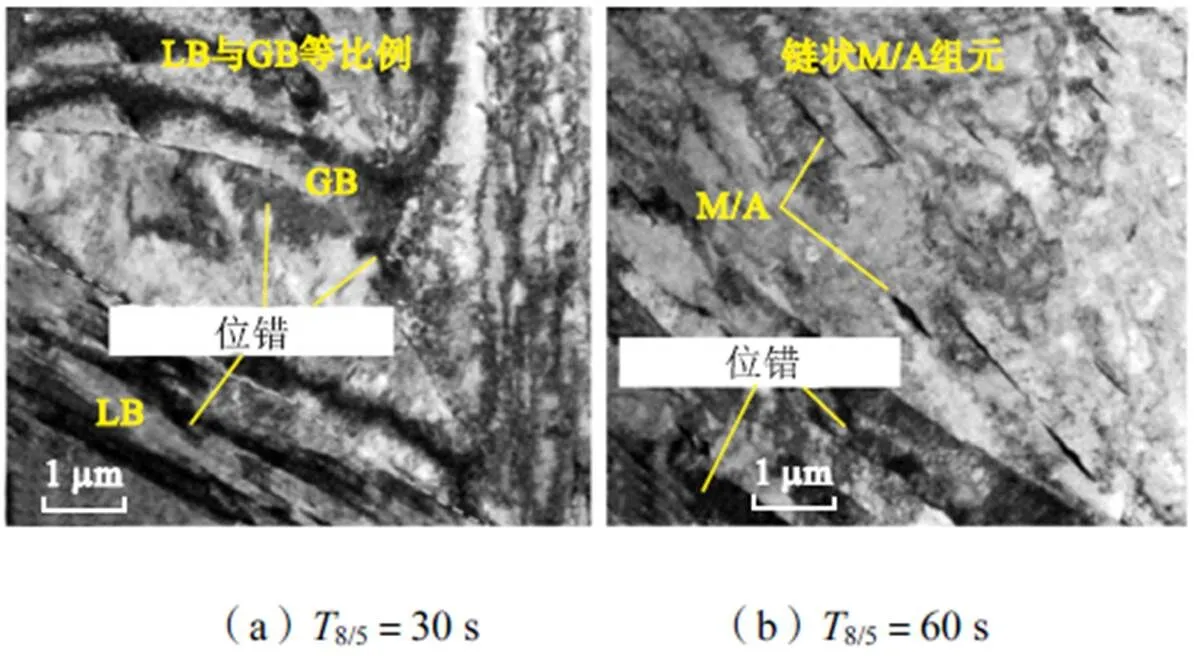
图8 不同T8/5下的焊接热影响区组织
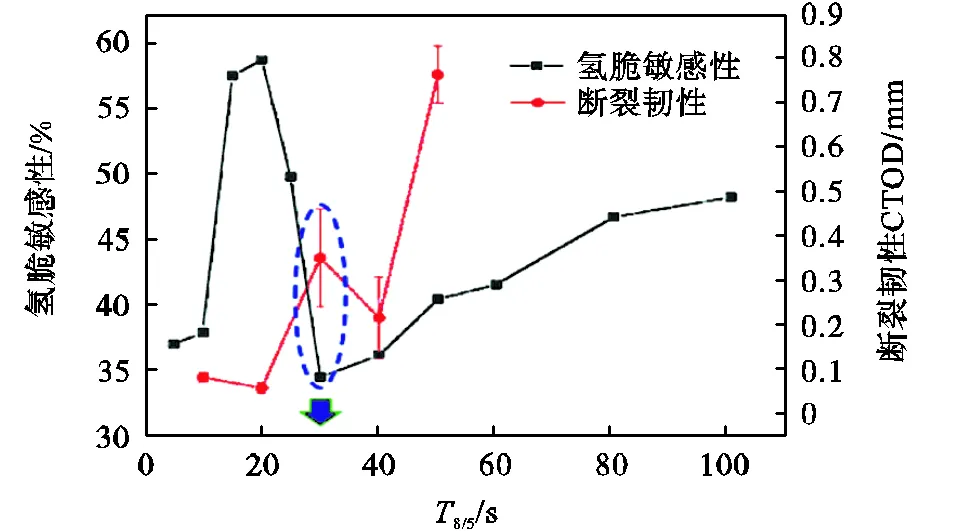
图9 不同T8/5下的焊接热影响区综合性能
2 焊接接头综合性能协同提升的组织调控原理
对于在高温、疲劳、腐蚀极端复杂环境下工作的高温蒸汽管道和深海油气管道,其材料及焊接接头须具有优异的综合服役性能以适应复杂服役环境,避免早期失效,满足设计寿命要求.然而,对于经历急热急冷焊接热循环的焊接接头,其综合性能的提升调控是其难题.因此,以材料微观损伤机制为基础,揭示焊接接头微观组织与宏观性能的关联,开发实现最佳综合服役性能的焊接工艺,对高性能焊接接头的成形制造具有科学指导意义.
2.1 抑制Ⅳ型裂纹的铁素体耐热钢焊接接头组织调控原理
如前所述,Ⅳ型裂纹由细晶区的材料蠕变损伤引起,原奥氏体晶界处残留的M23C6析出物、高焊接残余应力与高拘束应力状态是Ⅳ型裂纹产生的主导因素,而机组启停机和调峰运行带来的疲劳会加剧细晶区的材料损伤.由此,提出了焊前多次短时正火处理充分溶解原奥氏体晶界残留碳化物的调控原理,并开发了控制细晶区宽度和拘束度的小坡口角度、低热输入焊接工艺[11],发明了厚壁蒸汽管道壁厚外径非等效加热面积准则的焊后局部热处理方法[18],实现了原奥氏体晶界碳化物充分溶解,降低了细晶区宽度和拘束度,提高了焊接残余应力消除率(图10),有效抑制了Ⅳ型早期开裂.

(a)细晶区拘束与HAZ宽度关系(b)低热输入降低HAZ宽度(c)新加热面积准则消应力效果
2.2 协同提升大应变与抗腐蚀综合性能的管线钢焊接接头组织调控原理
针对深海油气管道大应变-强腐蚀服役对多层多道焊接接头高抗应力腐蚀性能、高断裂韧性的要求,阐明了多层多道焊接热循环对热影响区微观组织演变的影响机制,提出了提升综合性能的二次调控法,即通过调控一次热循环实现打底焊热影响区组织内板条贝氏体(LB)和粒状贝氏体(GB)相近比例的最优组合[19],以及获得小晶粒尺寸、高比例大角度晶界、高密度不可逆氢陷阱,再通过低热输入的填充焊对打底焊热影响区组织的二次热循环调控[20],消除劣化断裂韧性的链状M-A组元(图11),实现了焊接接头抗应力腐蚀性能和断裂韧性的协同提升,从而开发抗应力腐蚀、抗循环高塑性应变最佳综合性能的焊接工艺.

图11 二次调控焊接热循环
3 极端复杂环境下含缺陷结构寿命的精准预测理论
焊接结构在成形制造及服役中不可避免产生缺陷,为保证结构服役安全,必须对缺陷进行科学准确的断裂评定和寿命预测.然而,当前国内外通用标准难以准确考虑结构拘束水平、焊接残余应力对裂纹行为的影响,加之高温、疲劳、腐蚀等极端复杂环境带来裂纹尖端材料损伤机制与性能的改变,使得裂纹萌生与扩展行为更为复杂,导致使用当前国际通用标准的预测结果与实际差别很大,成为结构寿命精准预测的瓶颈性难题,给以“相似性原理”为基础的结构强度设计与评估带来了严峻挑战.
3.1 高温蠕变疲劳裂纹寿命精准预测模型与服役性能评价方法
提升高温蒸汽管道缺陷寿命的途径包括两个方面:一是开发科学合理的寿命预测模型;二是获得考虑材料劣化的实时性能.针对当前国际通用标准R5、R6[21-22]中寿命预测模型不能反映裂纹尖端的材料损伤机制,并且忽略实际管道裂纹尖端复杂应力状态与标准试样的差别,提出了与载荷水平无关的蠕变拘束新参量*[23],建立了表征裂纹尖端应力场的*-*双参量表达式(图12),实现了管道裂纹尖端真实应力状态的准确表征[24].阐明了蠕变裂纹尖端的拘束效应[25-28]与残余应力释放效应[29-30],并基于裂纹尖端蠕变韧性耗散的损伤机制,发明了精准预测蠕变-疲劳裂纹孕育期和扩展速率的*-*双参量法模型[31-52](图13和图14),实现了损伤机制、应力状态和残余应力释放的定量表征,预测精度比R5标准提高了5倍以上.为了便于推广应用,在此基础上,并参考R5、BS7910等[53]国际通用标准,创建了Ⅰ级简化评估-Ⅱ级常规评估-Ⅲ级精确评估的3级评估体系,制定了我国电力行业第1个含缺陷高温高压管道寿命评估标准,填补了我国电力行业标准在此领域的空白.

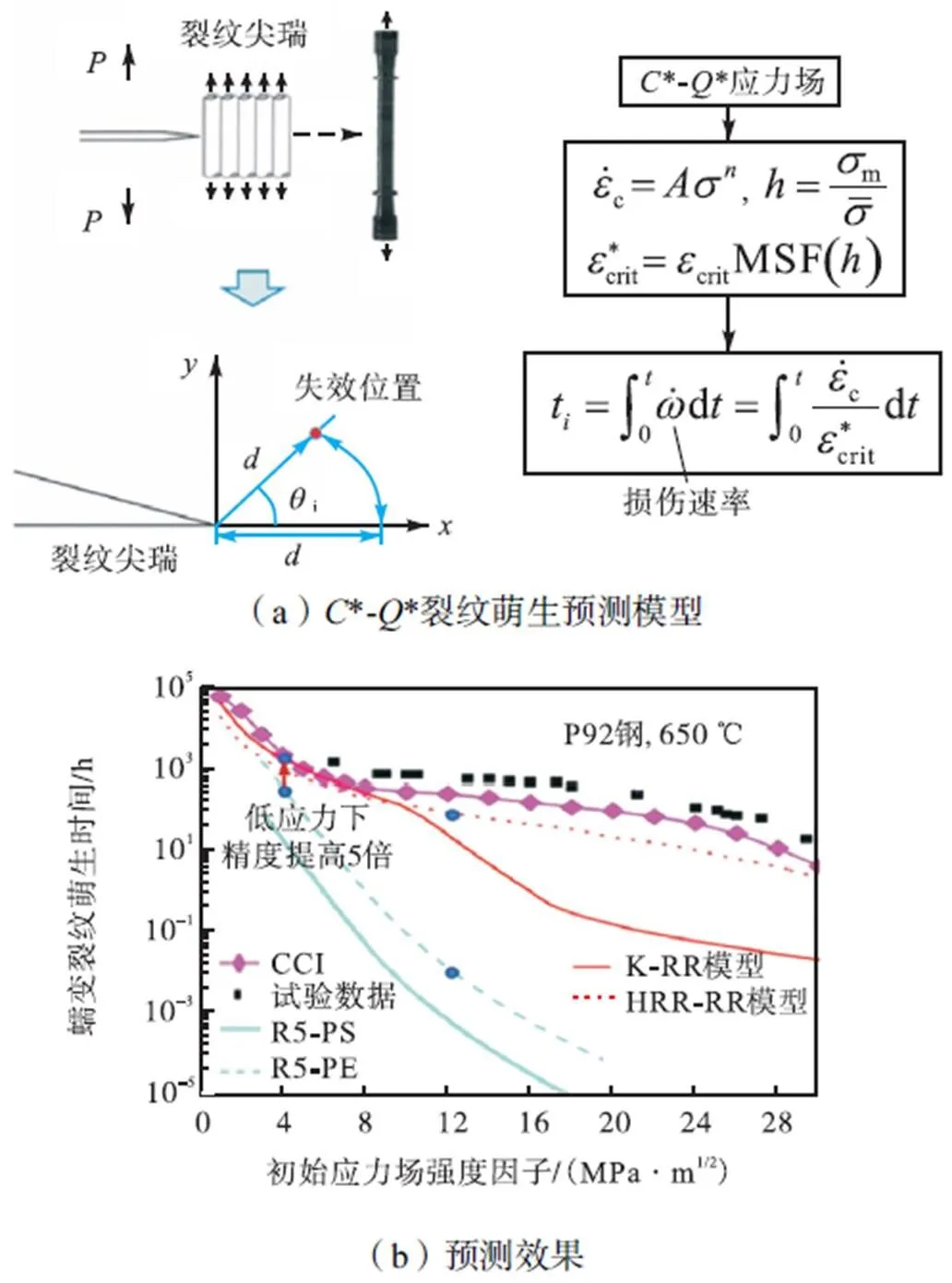
图13 C*-Q*双参量法蠕变裂纹萌生预测模型
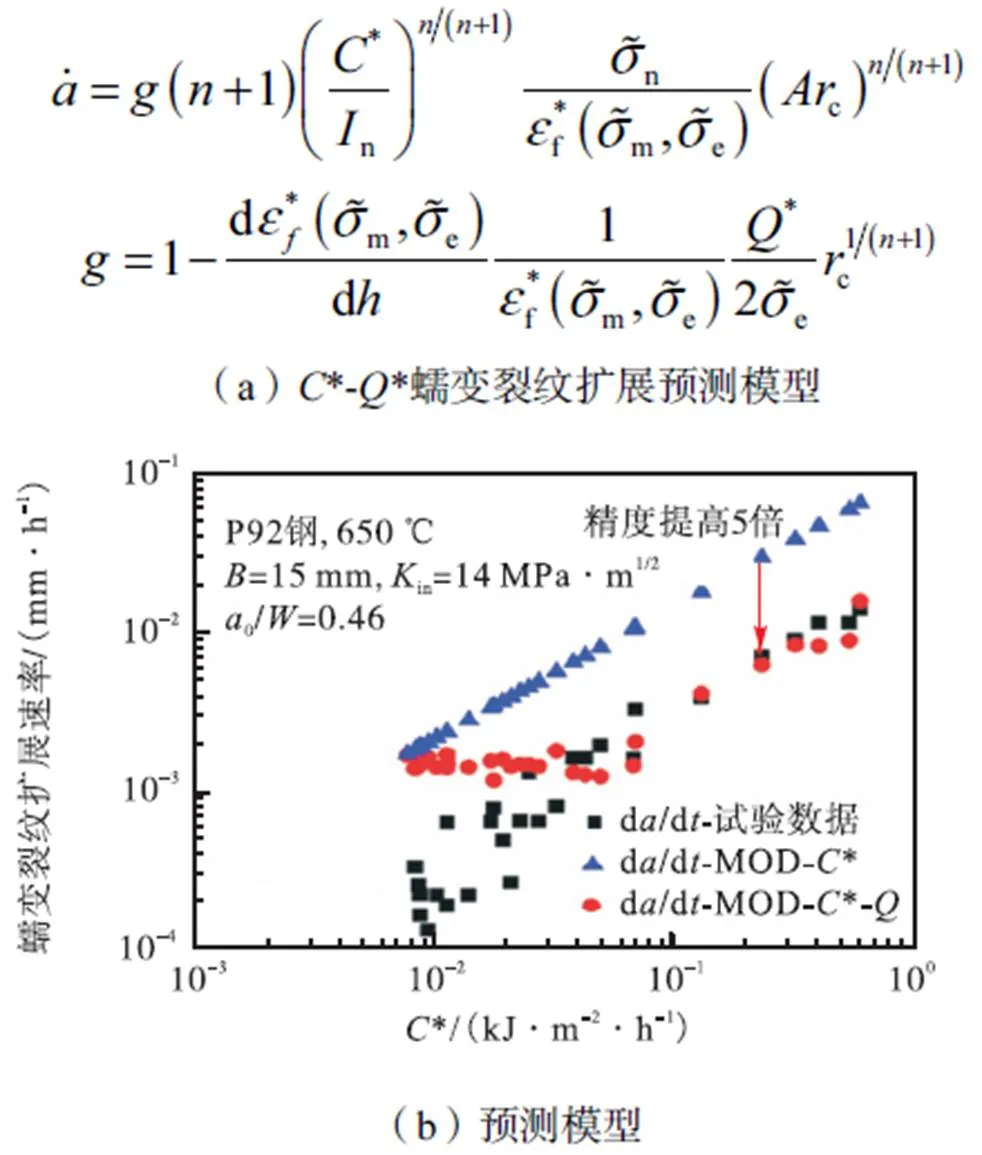
图14 C*-Q*双参量法蠕变裂纹扩展预测模型
针对在役高温蒸汽管道的实时性能,发明了便携式微创取样机、超小型微创高温蠕变疲劳试验机等新装置(图15),建立了微损伤的管道取样与蠕变、疲劳性能测试方法[54-56],开发了分段计算微试样变形的改进锥模型[57],实现了微小试样与标准试样性能数据的有效转化(图16).

图15 便携式微创取样机与超小型微创高温蠕变疲劳试验机

图16 分段计算微试样变形的改进锥模型
3.2 深海油气管道全寿期极端复杂工况下断裂评定精准模型与服役性能评价方法
围绕深海管道海上铺设阶段单轴循环高塑性应变加载、海底服役阶段循环高塑性应变与内压双轴加载及H2S强腐蚀环境,建立了实现深埋裂纹向表面裂纹等效转换的F参量法模型[58],提出了单轴与双轴加载下改进的参考应变法计算模型[59-63]、双金属复合管焊缝裂纹驱动力解析模型[64-65],建立了耦合上述模型的失效评定曲线(FAC-new),实现了覆盖深海全类型管道、全类型缺陷、全寿期的精确断裂评定,解决了DNV[66]、R6标准评估单轴高应变加载偏保守、评估高应变与内压双轴极限加载偏危险的不足(图17).针对高应变管道的性能评价,发明了国内首台套全尺寸管道大变形极限评价装置(图18),建立了深海管道循环高应变-腐蚀性能的测试方法[67].

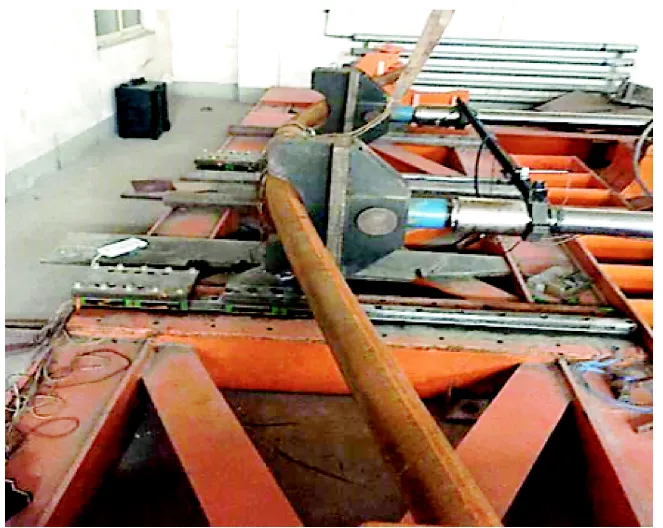
图18 全尺寸管道大变形极限评价装置
4 结 语
长寿命高可靠性是现代装备的迫切需求和发展方向,对于装备中必不可少的焊接结构,因运行环境复杂化、结构尺寸极端化导致失效模式和破坏机理均有异于传统对象,必须从材料、接头、结构三级层级进行一体化的设计、制造及评价,才能实现满足极端复杂环境下长寿命安全服役的设计要求.本文基于这一理念,以高温、高压、腐蚀、疲劳等极端复杂环境下服役的高温蒸汽管道和深海油气管道为研究对象,介绍了从材料损伤微观机制、焊接接头综合性能协同提升的组织调控原理、服役寿命精准预测理论3个层级取得的理论创新成果,构建的材料-接头-结构一体化的长寿命高可靠性焊接结构设计、成形与评价理论及技术体系,也可望用于航天航空、高铁、核电、石化、舰船等其他领域重大装备焊接结构的长寿命成形制造与评价.
[1] Hasegawa Y,Ohgami M,Okamura Y. Creep properties of heat affected zone of weld in W containing 9%—12% chromium creep resistant martensitic steels at elevated temperature[C]// Advanced Heat Resistant Steels for Power Generation. Cambridge:IOM Communications,The University Press,1999:655-667.
[2] 徐连勇,荆洪阳,安俊超,等. P92钢焊接接头蠕变本构关系[J]. 焊接学报,2009,30(12):29-32.
Xu Lianyong,Jing Hongyang,An Junchao,et al. Creep constitutive relation of P92 steel welded joint[J]. Transactions of the China Welding Institution,2009,30(12):29-32(in Chinese).
[3] Xiao B,Xu L Y,Zhao L,et al. Tensile mechanical properties,constitutive equations,and fracture mechanisms of a novel 9% chromium tempered martensitic steel at elevated temperatures[J]. Materials Science and Engineering:A,2017,690:104-119.
[4] Smith D J,Walker N S,Kimmins S T. Type Ⅳ creep cavity accumulation and failure in steel welds[J]. International Journal of Pressure Vessels and Piping,2003,80(6):617-627.
[5] Albert S K,Matsui M,Watanabe T,et al. Variation in the type Ⅳ cracking behaviour of a high Cr steel weld with post weld heat treatment[J]. International Journal of Pressure Vessels and Piping,2003,80:405-413.
[6] Francis J A,Mazur W,Bhadeshia H K D H. Type Ⅳ cracking in ferritic power plant steels[J]. Materials Science and Technology,2006,22(12):1387-1395.
[7] Abe F,Tabuchi M,Kondo M,et al. Suppression of type Ⅳ fracture and improvement of creep strength of 9Cr steel welded joints by boron addition[J]. International Journal of Pressure Vessels and Piping,2007,84(1/2):44-52.
[8] 肖 博. 新型马氏体耐热钢G115蠕变微观损伤机理及本构模型[D]. 天津:天津大学材料科学与工程学院,2020.
Xiao Bo. Creep Microscopic Damage Mechanism and Constitutive Model of New Martensitic Heat Resistant Steel G115[D]. Tianjin:School of Materials Science and Engineering,Tianjin University,2020(in Chinese).
[9] Zhao L,Jing H Y,Xu L Y,et al. Investigation on mechanism of type Ⅳ cracking in P92 steel at 650℃[J]. Journal of Materials Research,2011,26(7):934-943.
[10] Zhao L,Jing H Y,Xu L Y,et al. Experimental study on creep damage evolution process of Type Ⅳ cracking in 9Cr-0.5Mo-1.8W-VNb steel welded joint[J]. Engineering Failure Analysis,2012,19:22-31.
[11] Zhao L,Jing H Y,Xu L Y,et al. Numerical investigation of factors affecting creep damage accumulation in ASME P92 steel welded joint[J]. Mterials and Design,2012,34:566-575.
[12] 姜运建,荆洪阳,徐连勇. 焊接残余应力对P92钢Ⅳ型蠕变开裂的影响[J]. 焊接学报,2011,32(1):16-20.
Jiang Yunjian,Jing Hongyang,Xu Lianyong. Effect of welding residual stress on type Ⅳcreep cracking of P92 steel[J]. Transactions of the China Welding Institution,2011,32(1):16-20(in Chinese).
[13] Zhao Y X,Xu L Y. Effect of blunt nanocracks on the splitting transformation of grain boundary dislocation piled up at triple junctions[J]. International Journal of Solids and Structures,2018,141/142:232-244.
[14] Li Q F,Zhao Y X,Xu L Y. Effect of nanovoid on grain boundary migration and disclinated cracking in nanocrystalline materials[J]. International Journal of Solids and Structures,2018,155(15):140-154.
[15] Han Y D,Jing H Y,Xu L Y,Welding heat input effect on the hydrogen permeation in the X80 steel welded joints[J]. Materials Chemistry and Physics,2012,132(1):216-222.
[16] Lu Y X,Jing H Y,Xu L Y. Effect of welding heat input on the corrosion resistance of carbon steel weld metal[J]. Journal of Materials Engineering Performance,2016,25(2):565-576.
[17] Han Y D,Wang R Z,Wang H,et al. Hydrogen embrittlement sensitivity of X100 pipeline steel under different pre-strain[J]. International Journal of Hydrogen Energy,2019,44(39):22380-22393.
[18] Xu L Y,Miao Y,Jing H Y,et al. Experimental and numerical investigation of heated band width for local post weld heat treatment of ASME P92 steel pipe[J]. Journal of Pressure Vessel Technology,2014,136(1):011401.
[19] Han Y D,Wang R Z,Jing H Y,et al. Sulphide stress cracking behaviour of the coarsegrained heat-affected zone in X100 pipeline steel under different heat inputs[J]. International Journal of Hydrogen Energy,2020,44(39):20094-20105.
[20] 王睿哲. 基于热模拟技术的X100管线钢焊接热影响区硫化氢应力腐蚀开裂行为研究[D]. 天津:天津大学材料科学与工程学院,2019.
Wang Ruizhe. Study on Stress Corrosion Cracking Behavior of Hydrogen Sulfide in Heat-affected Zone of X100 Pipeline Steel Welding Based on Thermal Simulation Technology[D]. Tianjin:School of Materials Science and Engineering,Tianjin University,2019(in Chinese).
[21] R5. Assessment Procedure for the High Temperature Response of Structure(Issue3)[S]. Gloucester,UK:British Energy,2003.
[22] R6. Assessment of the Integrity of Structures Containing Defects(Revision 4)[S]. Gloucester UK:British Energy,2001.
[23] Xu L Y,Zhang X F,Zhao L,et al. Quantifying the creep crack-tip constraint effects using a load-independent constraint parameter*[J]. International Journal of Mechanical Sciences,2016,119:320-332.
[24] Xu L Y,Zhang X F,Zhao L,et al. Characterization of creep crack-tip constraint levels for pressurized pipelines with axial surface cracks[J]. Advances in Engineering Software,2017,114:98-109.
[25] Zhao L,Jing H Y,Xu L Y,et al. Evaluation of constraint effects on creep crack growth by experimental investigation and numerical simulation[J]. Engineering Fracture Mechanics,2012,96:251-266.
[26] Zhao L,Jing H Y,Han Y D,et al. Prediction of creep crack growth behavior in ASME P92 steel welded joint[J]. Computational Materials Science,2012,61:185-193.
[27] Zhao L,Jing H Y,Xiu J J,et al. Experimental investigation of specimen size effect on creep crack growth behavior in P92 steel welded joint[J]. Materials and Design,2014,47:736-743.
[28] Wu D Q,Jing H Y,Xu L Y,et al. Numerical analysis of the creep crack constraint effects and the creep crack initiation for pressurized pipelines with circumferential surface cracks[J]. Advances in Engineering Software,2018,115:40-51.
[29] Zhao L,Jing H Y,Xu L Y,et al. Effect of residual stress on creep crack growth behavior in ASME P92 steel[J]. Engineering Fracture Mechanics,2013,110:233-248.
[30] Wu D Q,Jing H Y,Xu L Y,et al. Theoretical and numerical analysis of creep crack initiation combined with primary and secondary stresses[J]. Theoretical and Applied Fracture Mechanics,2018,95:143-154.
[31] Zhao L,Xu L Y,Han Y D,et al. Quantifying the constraint effect induced by specimen geometry on creep crack growth behavior in P92 steel[J]. International Journal of Mechanical Sciences,2015,94/95:63-74.
[32] Zhao L,Xu L Y,Han Y D,et al. Two-parameter characterization of constraint effect induced by specimen size on creep crack growth[J]. Engineering Fracture Mechanics,2015,143:121-137.
[33] Wu D Q,Jing H Y,Xu L Y,et al. Theoretical and numerical analysis of the creep crack initiation time considering the constraint effects for pressurized pipelines with axial surface cracks[J]. International Journal of Mechanical Sciences,2018,141:262-275.
[34] Wu D Q,Jing H Y,Xu L Y,et al. Analytical approaches of creep crack initiation prediction coupled with the residual stress and constraint effect[J]. European Journal of Mechanics/A Solids,2018,71:1-15.
[35] Wu D Q,Jing H Y,Xu L Y,et al. Investigation on creep crack initiation prediction considering constraint effect using constraint parameter[J]. Theoretical and Applied Fracture Mechanics,2018,96:631-641.
[36] Wu D Q,Jing H Y,Xu L Y,et al. Two-parameter approach of creep crack initiation times considering the constraint effect induced by specimen geometry[J]. Theoretical and Applied Fracture Mechanics,2018,96:31-44.
[37] Wu D Q,Jing H Y,Xu L Y,et al. Creep crack initiation prediction considering constraint effect for pressurized pipelines with circumferential surface cracks[J]. Fatigue & Fracture of Engineering Materials and Structures,2018,41(9):1900-1917.
[38] Wu D Q,Jing H Y,Xu L Y,et al. Analytical and numerical investigations of creep crack initiation considering the load-independent constraint parameter*[J]. Archive of Applied Mechanics,2018,88:2031-2050.
[39] Wu D Q,Jing H Y,Xu L Y,et al. Enhanced models of creep crack initiation prediction coupled the stress-regime creep properties and constraint effect[J]. European Journal of Mechanics/A Solids,2019,74:145-159.
[40] Wu D Q,Jing H Y,Xu L Y,et al. Engineering application of enhanced*-* two parameter approaches for predicting creep crack initiation times[J]. European Journal of Mechanics/A Solids,2020,82:104013.
[41] Wu D Q,Xu L Y,Zhai W,et al. Analysis of the constraint levels and the creep crack initiation times for pressurized pipes with long surface cracks[J]. Thin-Walled Structures,2020,153:106787.
[42] Xu L Y,Zhao L,Han Y D,et al. Characterizing crack growth behavior and damage evolution in P92 steel under creep-fatigue conditions[J]. International Journal of Mechanical Sciences,2017,134:63-74.
[43] Xu L Y,Rong J Y,Zhao L,et al. Creep-fatigue crack growth behavior of G115 steel at 650℃[J]. Materials Science & Engineering A,2018,726:179-186.
[44] Zhao L,Xu L Y,Gao Z F,et al. Characterization crack growth behavior in creep-fatigue loading conditions through different specimen geometries[J]. International Journal of Mechanical Sciences,2018,145:246-257.
[45] Tang Z X,Jing H Y,Xu L Y,et al. Investigating crack propagation behavior and damage evolution in G115 steel under combined steady and cyclic loads[J]. Theoretical and Applied Fracture Mechanics,2019,100:93-104.
[46] Tang Z X,Jing H Y,Xu L Y,et al. Investigation of creep-fatigue crack growth of G115 steel using a novel damage model[J]. International Journal of Mechanical Sciences,2020,183:105827.
[47] Zhao L,Xu L Y,Han Y D,et al. Analysis on stress-strain behavior and life prediction of P92 steel under creep-fatigue interaction conditions[J]. Fatigue & Fracture of Engineering Materials & Structures,2020,43:2731-2743.
[48] Tang Z X,Jing H Y,Xu L Y,et al. Temperature effect on dwell-fatigue crack propagation behavior of novel tempered martensitic ferritic steel G115[J]. Engineering Fracture Mechanics,2020,237:107250.
[49] Zhao L,Xu L Y,Han Y D,et al. Modelling creep-fatigue behaviours using a modified combined kinematic and isotropic hardening model considering the damage accumulation[J]. International Journal of Mechanical Sciences,2019,161/162:105016.
[50] Tang Z X,Jing H Y,Xu L Y,et al. Creep-fatigue crack growth behavior of G115 steel under different hold time conditions[J]. International Journal of Fatigue,2018,116:572-583.
[51] Tang Z X,Jing H Y,Xu L Y,et al. Crack growth behavior,fracture mechanism,and microstructural evolution of G115 steel under creep-fatigue loading conditions[J]. International Journal of Mechanical Sciences,2019,161/162:105037.
[52] Tang Z X,Jing H Y,Xu L Y,et al. Stress state and stress-induced microstructural evolution around the crack tip of G115 steel after dwell‐fatigue crack propagation[J]. Fatigue & Fracture of Engineering Materials & Structures,2019,42(10):2290-2301.
[53] BS7910. Guide for Assessing the Significance of Flaws in Metallic Structures[S]. London:British Standards,2013.
[54] Zhao L,Jing H Y,Xu L Y,et al. Evaluating of creep property of distinct zones in P92 steel welded joint by small punch creep test[J]. Materials and Design,2013,47:677-686.
[55] Zhao L,Song K,Xu L Y,et al. Investigating creep rupture and damage behavior of 41Fe-25.5Cr-23.5Ni alloy small punch creep specimens using a novel microstructure meshing approach[J]. Materials Science & Engineering A,2019,766:138370.
[56] Song K,Zhao L,Xu L Y,et al. Experimental and numerical analysis of creep and damage behavior of P92 steel by small punch tests[J]. Theoretical and Applied Fracture Mechanics,2019,100:181-190.
[57] Zhao L,Song K,Xu L Y,et al. Determination of creep properties of an advanced Fe-Cr-Ni alloy using small punch creep test with a modified creep strain model[J]. Theoretical and Applied Fracture Mechanics,2019,104:102324.
[58] Jia P Y,Jing H Y,Xu L Y,et al. A modified engineering critical assessment method for deeply-embedded cracks in metallic pipelines subjected to large plastic strain[J]. Engineering Fracture Mechanics,2019,208:171-188.
[59] Jia P Y,Jing H Y,Xu L Y,et al. A modified reference strain method for engineering critical assessment of reeled pipelines[J]. International Journal of Mechanical Sciences,2016,105:23-31.
[60] Jia P Y,Jing H Y,Xu L Y,et al. A modified fracture assessment method for pipelines under combined inner pressure and large-scale axial plastic strain[J]. Theoretical and Applied Fracture Mechanics,2017,87:91-98.
[61] Zhao X X,Xu L Y,Jing H Y,et al. A modified strain-controlled reference stress approach for submarine pipelines under large-scale plastic strain[J]. Advances in Engineering Software,2018,119:12-20.
[62] Zhao X X,Xu L Y,Jing H Y,et al. A modification of reference strain approach for thin-walled submarine pipelines under large-scale plastic strain and internal pressure[J]. Thin-Walled Structures,2019,140:182-194.
[63] Zhao X X,Xu L Y,Jing H Y,et al. A strain-controlled fracture assessment for submarine thin-walled pipes with V-groove welds and circumferential embedded cracks[J]. Thin-Walled Structures,2019,145:106377.
[64] Jia P Y,Jing H Y,Xu L Y,et al. Investigation on plastic eta factors for SE(T)specimens with undermatched weld metal based on plane strain finite element analysis[J]. International Journal of Mechanical Sciences,2017,122:192-202.
[65] Zhao X X,Xu L Y,Jing H Y,et al. A strain-based fracture assessment for offshore clad pipes with ultra undermatched V groove weld joints and circumferential surface cracks under large-scale plastic strain[J]. European Journal of Mechanics / A Solids,2019,74:403-416.
[66] DNV-RP-F108. Offshorestandard-Fracture Control for Pipeline Installation Methods Introducing Cyclic Plastic Strain[S]. Hovik(Norway):Det NorskeVeritas,2006.
[67] Han Y D,Song S,Jing H Y,et al. Effects of full-scale reel-lay simulation on mechanical properties of X65 grade pipeline girth welds[J]. Materials Testing,2018,60(12):1145-1154.
Long-Life and High-Reliability Welded Structures
Xu Lianyong1, 2, 3
(1. School of Materials Science and Engineering,Tianjin University,Tianjin 300350,China;2. Tianjin Key Laboratory of Advanced Joining Technology,Tianjin 300350,China;3. State Key Laboratory of Engines,Tianjin University,Tianjin 300350,China)
Progress in research on the design and forming manufacturing of modern equipment structures is often challenged by extremely complex environments and requirements of long life and safe service. The weakest points of welded structures are the welded joints. This work proposes a collaborative microstructural control principle to improve the comprehensive performance of welded joints in complex environments by considering the characteristics of thermal power steam pipes,deep-sea oil and gas pipelines,and other energy equipment in the main line. Common problems related to the service safety of main pipelines in extremely complex environments are addressed by examining the material micro-damage mechanism of pipeline failure. Accurate life prediction theory for pipelines with defects is presented,and the corresponding standards are established. Finally,a long-life and high-reliability welded structure design,forming technology,evaluation theory,and technical system that integrates material joint structures is demonstrated.
long life;reliability;welded structure;forming manufacturing;collaborative improvement
TG142.25
A
0493-2137(2022)01-0001-10
10.11784/tdxbz202104056
2021-04-29;
2021-05-25.
徐连勇(1975— ),男,博士,教授.
徐连勇,xulianyong@tju.edu.cn.
国家杰出青年科学基金资助项目(52025052);国家自然科学基金资助项目(51975405,51575382,51475326,50975196,50805103).
Supported by the National Science Foundation for Distinguished Young Scholars of China(No. 52025052),the National Natural Science Foundation of China(No. 51975405,No. 51575382,No. 51475326,No. 50975196,No. 50805103).
徐连勇,天津大学北洋讲席教授,国家杰出青年基金获得者,长期从事长寿命高可靠性焊接方面的研究工作,发展了以长寿命为目标的焊接设计、成形制造及评价技术体系,解决了提高寿命预测精度、提升焊接接头综合性能等制约管道极端复杂环境长寿命服役的关键瓶颈问题,排名第一获省部级科技进步一等奖3项,牵头制定了我国电力行业第一个高温缺陷寿命评估标准.以第一发明人获授权发明专利35件(含美国1件)、软件著作权4项.以第一作者或通信作者在Acta Mater等期刊发表SCI收录论文150余篇,SCI他引1200余次.现担任中国焊接学会常务理事、焊接力学及结构设计与制造专委会主任和国际焊接学会IIW C-Ⅹ委员会中国代表,主持撰写《中国焊接技术路线图》、《中国焊接1994—2016》中“焊接结构”章节,连续3年负责撰写《IIW研究进展报告》“焊接接头性能与断裂预防(IIW C-Ⅹ)”和“压力容器、锅炉与管道焊接(IIW C-Ⅺ)”两个专委会的年度报告.

(责任编辑:田 军)

